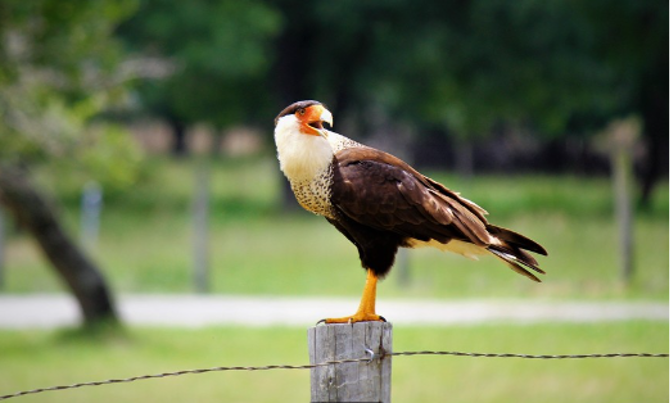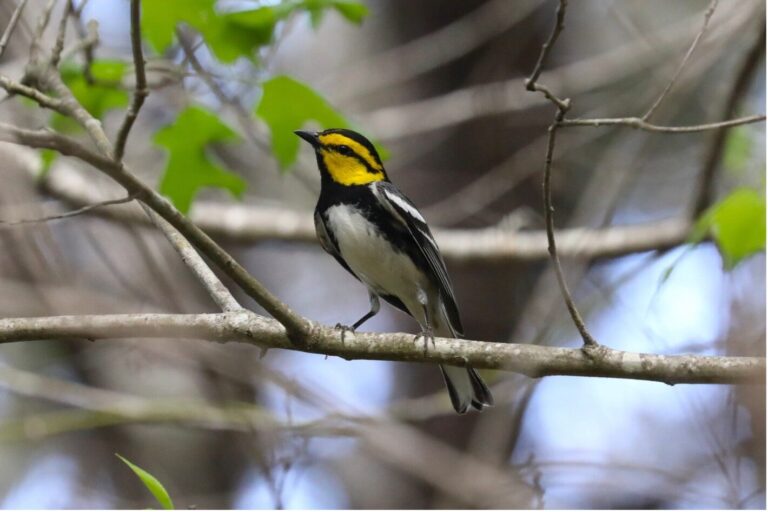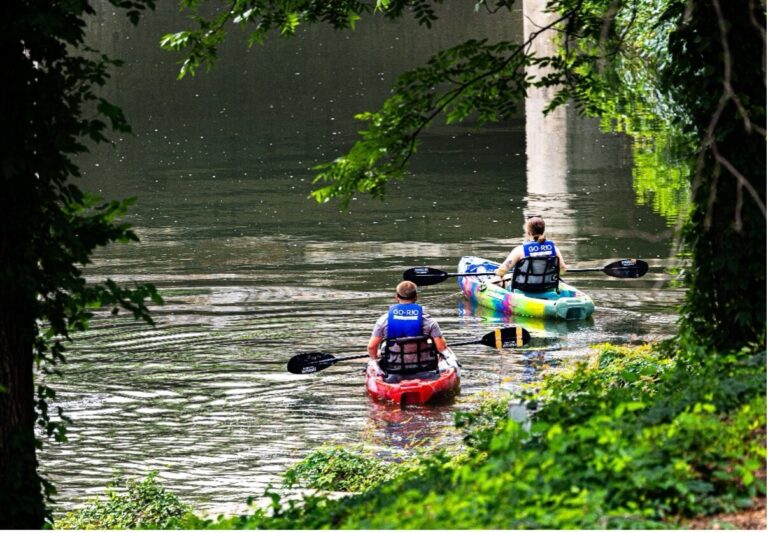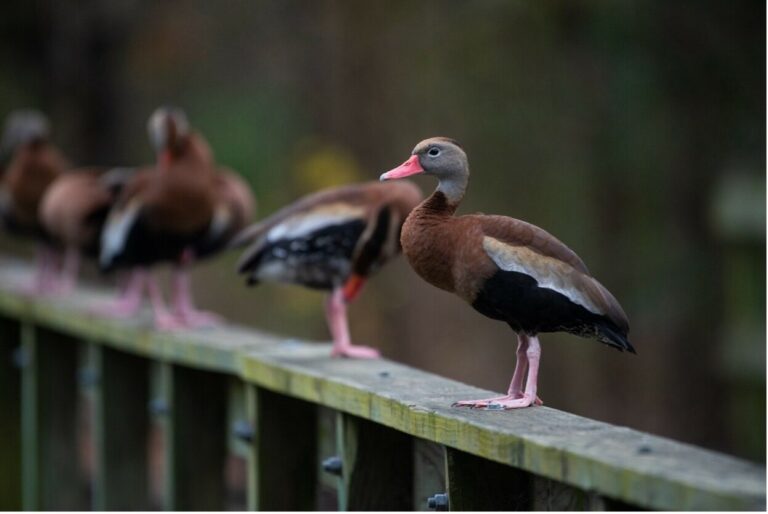Última actualización el 30 de enero de 2024
Nunca olvidaré la primera vez que vi un par de Crested Caracaras (Caracara plana). Estaba corriendo por el Parque Olmos Basin en San Antonio y vi lo que pensé que era una pareja de Buitres Negros (Coragyps atratus) bebiendo de un charco de lluvia. Tras una inspección más cercana, observé algunas distinciones únicas: llamativo plumaje blanco y negro, patas largas, caras de color amarillo anaranjado brillante y picos ganchudos de color plateado azulado. ¿Cuáles eran estos híbridos con apariencia de pollo, buitre y águila? Desconcertado, abrí mi iNaturalista aplicación, tomó una foto y descubrió que las aves eran Crested Caracaras, miembros de la familia Falcon común en todo el Cuenca del río San Antonio, el sur de los Estados Unidos y partes de Centroamérica. y su poblacion parece estar expandiéndose.
Un par de Caracaras Crestadas en el Parque Olmos Basin.
La primera parte de los Caracaras Crestados. El nombre se refiere a sus largas crestas negras en la cabeza. La palabra “caracara” proviene de una palabra indígena sudamericana que se refiere a su llamadas guturales y traqueteantes eso aparentemente suena como pasar un palo a lo largo de una cerca. A diferencia de la mayoría de las aves rapaces, los caracaras crestados acechan y persiguen su presa a pie en lugar de zambullirse o abalanzarse. Son comedores oportunistas y tienen una dieta extensa y variada. A menudo se los puede ver caminando por el suelo en busca de insectos y reptiles, vadeando aguas poco profundas para pescar peces y anfibios, o a lo largo de la carretera esperando a que los atropellen. Los caracaras crestados son bastante agresivos, vuelan relativamente bajo para escanear el suelo en busca de presas y vencen a los buitres negros y a los buitres (Aura de Cathartes) en las fiestas de carroña.
Estas aves son los únicos miembros de la familia Falconidae que recolectan materiales para construir un nido con su pareja, en el que permanecerán durante varios años. Otros halcones utilizan un nido viejo o una depresión en el suelo para poner huevos. Los caracaras con cresta y su grupo familiar también se ayudarán a limpiarse las plumas unos a otros en un comportamiento conocido como alopreening.
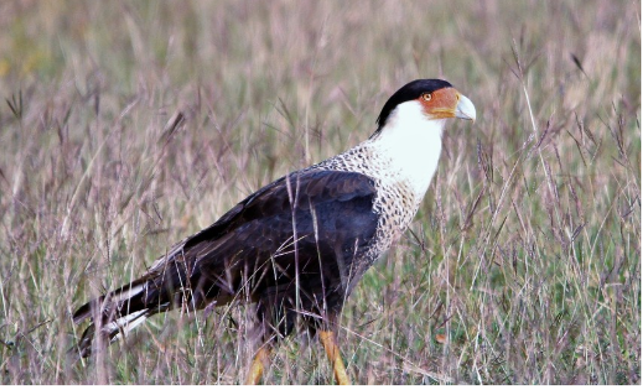
¿Sabías? ¡El Crested Caracara más antiguo registrado tenía al menos 21 años y nueve meses!
Crédito de la foto: Peter Joseph.
¿Es eso un Caracara Crestado en la bandera mexicana?
La respuesta corta es No. Se cree que el pájaro de la bandera mexicana es el ave nacional de México, el águila real. (Aquila crisaetos), o como allí se le conoce, “El Águila Real.Sin embargo, algunos estudiosos y arqueólogos creen que los pictogramas aztecas precolombinos utilizados como referencia para la bandera mexicana representaban un caracara con cresta. También dicen que muchos pueblos indígenas y prehispánicos veneraban al ave. Este debate se ve aún más confuso por el hecho de que un nombre común para el caracara crestado es “águila mexicana”. Sin embargo, el Águila Real fue consagrada como ave nacional de México en 1984. Perdón, caracaras.
¿Dónde puedo ver un caracara crestado?
Encima 650 Se han informado observaciones del Crested Caracara en los cuatro condados más grandes de la cuenca del río San Antonio: Bexar, Wilson, Karnes y Goliad. También ha habido numerosos avistamientos a lo largo de la costa de la Bahía de San Antonio.
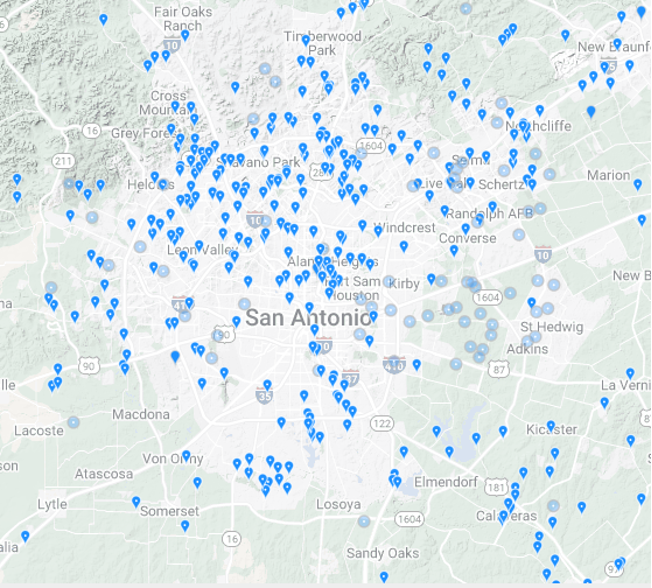
Un mapa de avistamientos de Crested Caracara en San Antonio. Fuente: naturalist.org
La mejor oportunidad de ver esta ave de presa es durante sus momentos favoritos de búsqueda de alimento: temprano en la mañana y al final de la tarde. Búsquelos volando bajo, caminando sobre el suelo en paisajes abiertos, buscando comida en un cadáver o posándose en el árbol o estructura más alta cercana. Los caracaras evitan áreas con una espesa capa de suelo, así que dirígete a pastos, tierras de cultivo, matorrales, campos abiertos, carreteras o campos de golf para tener más posibilidades de detectarlos. También puedes verlos cerca de mataderos, gallineros y vertederos buscando comida.
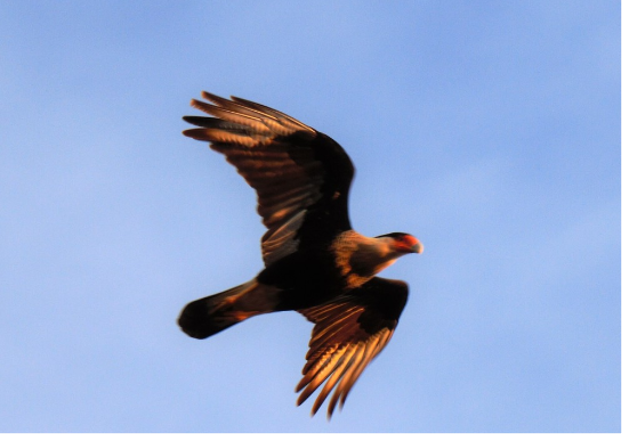
Una forma de identificar rápidamente un caracaras con cresta volador es por sus plumas blancas debajo de la cola y las alas exteriores.
Crédito de la foto: Peter Joseph.
¿Cómo puedo ayudar a estas aves?
Aunque los caracaras crestados están catalogados como una especie de baja preocupación por la conservación, todavía podemos tomar medidas para asegurar su futuro en nuestra cuenca. Como muchas otras especies de aves, su hábitat enfrenta amenazas por la urbanización, la posterior pérdida de áreas de anidación y colisiones con vehículos en las carreteras. Algunos propietarios también ven al Crested Caracara como una amenaza para las mascotas y el ganado, aunque el Departamento de Parques y Vida Silvestre de Texas ha desacreditado esto. Para estudios sobre el impacto del cambio climático en la zona de distribución del Crested Caracara, consulte este estudio de la Sociedad Audubon.
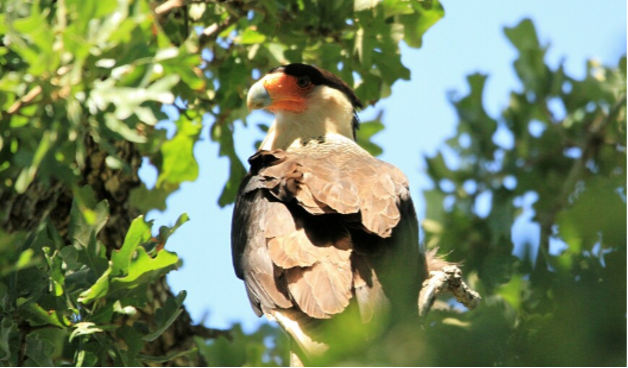
Además del Crested Caracara, existen otras diez especies de caracara. Sin embargo, viven exclusivamente en Centro y Sudamérica. Crédito de la foto: Peter Joseph.
En última instancia, la mejor manera de ayudar a estas fantásticas aves parecidas a halcones es aprende más sobre ellos y abogar por el desarrollo sostenible de la tierra que protege la biodiversidad de las aves. Con estas acciones podemos ayudar al Caracara Crestado y a la salud de ecosistemas en toda nuestra cuenca.

